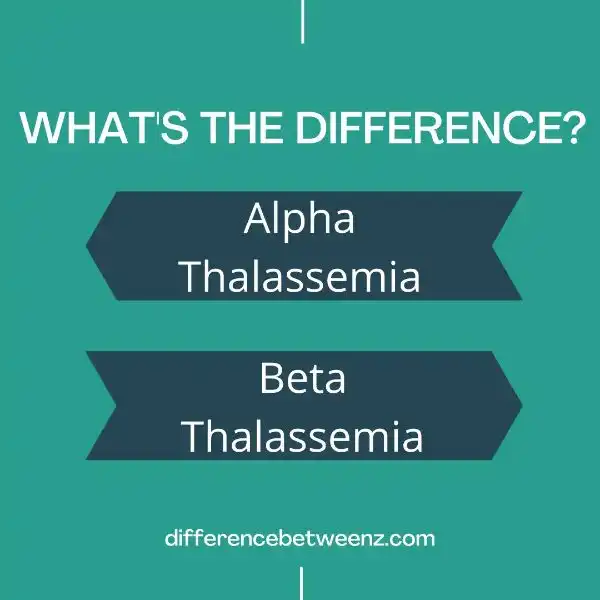Thalassemia is a blood disorder that affects the production of hemoglobin. There are two main types of thalassemia – alpha and beta. While both types result in anemia, there are some key differences between the two.
What is Alpha Thalassemia?
- Alpha thalassemia is an inherited blood disorder that affects the production of hemoglobin. Hemoglobin is the protein in red blood cells that carries oxygen to the body’s tissues. People with alpha thalassemia have reduced hemoglobin levels and may have fewer red blood cells than normal.
- This can cause anemia, which can lead to fatigue, Difficulty breathing, and other health problems. There are four types of alpha thalassemia, depending on how many alpha globin genes are affected. The most severe form, called alpha thalassemia major, is fatal in infancy.
- The mildest form, called alpha thalassemia trait, causes no symptoms. Alpha thalassemia is most common in people of African, Mediterranean, or Southeast Asian descent. In the United States, it is estimated that 1 in 100 African Americans has alpha thalassemia trait. There is no cure for alpha thalassemia, but treatment can help manage the symptoms.
What is Beta Thalassemia?
Beta thalassemia is an inherited blood disorder that affects the production of hemoglobin. Hemoglobin is a protein found in red blood cells that carries oxygen to the body’s tissues. People with beta thalassemia have reduced levels of hemoglobin and may experience anemia, fatigue, and other symptoms. There are two types of beta thalassemia: major and minor.
Major beta thalassemia is the more severe form of the disorder and can be life-threatening. Minor beta thalassemia is less severe and typically does not require treatment. However, both types of beta thalassemia can cause complications such as iron overload, bone marrow failure, and heart problems. There is no cure for beta thalassemia, but treatment can help to manage the symptoms and complications.
Difference between Alpha Thalassemia and Beta Thalassemia
Thalassemia is an inherited blood disorder that affects the production of hemoglobin.
- There are two main types of thalassemia: alpha and beta. Both types can lead to anemia, but they differ in their symptoms and severities. Alpha thalassemia occurs when one or more of the four alpha globin genes are missing or mutated.
- This can cause a wide range of symptoms, from mild anemia to severe complications such as organ damage. Beta thalassemia, on the other hand, is caused by mutations in the beta-globin gene.
While it also leads to anemia, beta thalassemia is generally less severe than alpha thalassemia and can be treated with medication. However, both types of thalassemia can be managed with lifestyle changes and regular medical care.
Conclusion
Alpha thalassemia is an inherited blood disorder caused by a mutation in the alpha globin gene. This gene helps produce hemoglobin, the protein in red blood cells that carries oxygen throughout the body. When there is a mutation in this gene, it results in less hemoglobin being produced. This can lead to mild or severe anemia, depending on how much of the alpha globin gene is affected. -Beta thalassemia is also an inherited blood disorder, but it’s caused by a mutation in the beta-globin gene. This gene helps produce another type of hemoglobin called fetal hemoglobin (HbF). When there is a mutation in this gene, it results in less HbF being produced.


